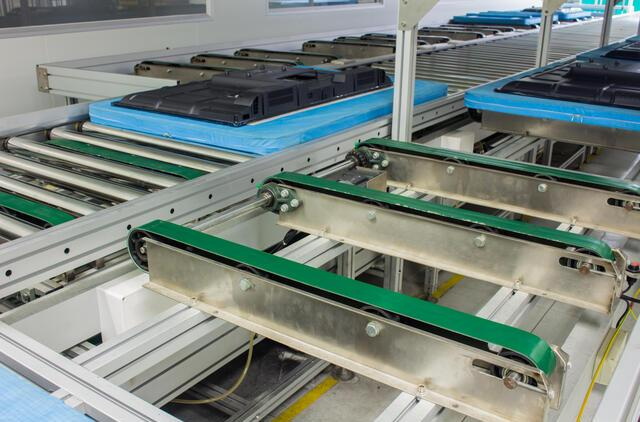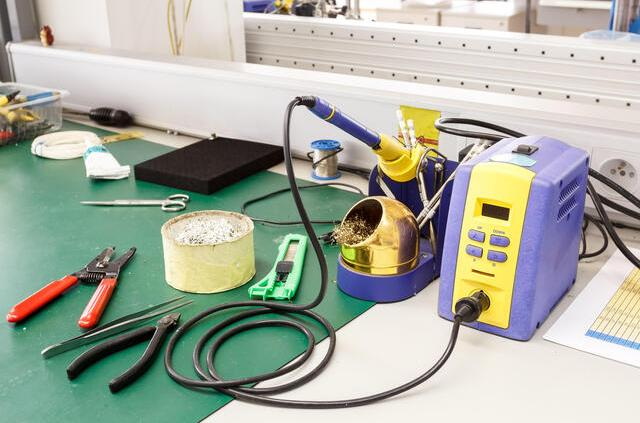Content Menu
● Introduction to Lead-Free PCB Assembly
>> Benefits of Lead-Free PCB Assembly
● Challenges in Lead-Free PCB Assembly
● Best Practices for Lead-Free PCB Assembly
● Provide SMT Lead-Free PCB Assembly
>> Steps in SMT Lead-Free PCB Assembly
● Surface Finishes in Lead-Free PCB Assembly
● Trends in PCB Fabrication
● Environmental and Health Benefits
● Future Developments in Lead-Free PCB Technology
● Market Demand and Regulatory Pressures
● Conclusion
● FAQs
>> 1. What are the primary benefits of using lead-free PCB assembly?
>> 2. What are the common challenges faced in lead-free PCB assembly?
>> 3. How does lead-free solder improve product durability?
>> 4. What surface finishes are commonly used in lead-free PCB assembly?
>> 5. What regulations govern the use of lead-free solder in PCB assembly?
● Citations:
In recent years, the electronics industry has witnessed a significant shift towards lead-free PCB assembly due to environmental and health concerns associated with traditional lead-based soldering. Lead-free PCB assembly not only aligns with global regulations like RoHS (Restriction of Hazardous Substances) but also offers several benefits that can enhance the durability and reliability of electronic products. This article explores how lead-free PCB assembly can improve product durability, focusing on its advantages, challenges, and best practices.

Introduction to Lead-Free PCB Assembly
Lead-free PCB assembly involves using solder paste and components that contain less than 0.1% lead, as mandated by RoHS regulations. This shift from traditional tin-lead (Sn-Pb) alloys to lead-free alternatives, such as SAC305 (Sn-Ag-Cu), has been driven by the need to reduce environmental pollution and health risks associated with lead exposure.
Benefits of Lead-Free PCB Assembly
1. Environmental Sustainability: Lead-free PCBs are more environmentally friendly, reducing the risk of lead poisoning and facilitating easier recycling of electronic waste.
2. Improved Reliability: Lead-free solder has a higher melting point, which can improve thermal performance and reduce the risk of solder joint failures due to temperature fluctuations.
3. Design Flexibility: The use of lead-free soldering enables the production of smaller PCBs with finer pitches, supporting high-density semiconductor assembly.
4. Market Competitiveness: Compliance with RoHS regulations enhances a company's market image and competitiveness by aligning with global environmental standards.
Challenges in Lead-Free PCB Assembly
Despite its benefits, lead-free PCB assembly poses several challenges:
1. Higher Reflow Temperatures: Lead-free solder requires higher reflow temperatures (up to 250°C), which can damage components and PCB materials if not properly managed.
2. Material Selection: PCB materials must have a high glass transition temperature and low coefficient of thermal expansion to withstand the higher temperatures.
3. Moisture Sensitivity: Lead-free components are more prone to moisture absorption, necessitating careful handling and baking before assembly.
Best Practices for Lead-Free PCB Assembly
To ensure successful lead-free PCB assembly, manufacturers should follow these best practices:
1. Component Selection: Choose components with high thermal stability and moisture resistance.
2. PCB Material Selection: Use materials with high thermal endurance and low moisture absorption.
3. Reflow Profile Optimization: Adjust the reflow profile to minimize thermal stress on components and PCBs.
4. Cleaning and Handling: Implement specialized cleaning processes and handle components carefully to prevent moisture damage.
Provide SMT Lead-Free PCB Assembly
Surface Mount Technology (SMT) is a common method used in lead-free PCB assembly. It involves applying lead-free solder paste to the PCB pads and then placing components onto these pads. The assembly is then passed through a reflow oven where the solder melts and solidifies, securing the components in place.
Steps in SMT Lead-Free PCB Assembly
1. Pre-Assembly Preparation: Verify the Bill of Materials (BOM) to ensure all components are lead-free. Bake components to remove excess moisture.
2. Stencil Application: Apply lead-free solder paste using a stencil.
3. Component Placement: Place SMT components onto the solder paste.
4. Reflow Soldering: Pass the PCB through a reflow oven to melt and solidify the solder.
5. Inspection and Testing: Conduct visual inspections and functional tests to ensure assembly quality.

Surface Finishes in Lead-Free PCB Assembly
Surface finishes play a crucial role in ensuring reliable solder joints in lead-free PCB assembly. Common finishes include:
- Electroless Nickel Immersion Gold (ENIG): Provides a conductive surface and inhibits oxidation.
- Organic Solderability Preservatives (OSP): Maintains flatness and solderability.
- Immersion Silver: Offers good solderability while preserving flatness.
- Lead-Free Solder: Used when flatness is not critical.
- Hard Gold: Used for gold fingers and to inhibit oxidation.
Each finish has its advantages and is chosen based on the specific requirements of the PCB design and application.
Trends in PCB Fabrication
The PCB industry is evolving with several trends that complement lead-free assembly:
1. High-Density Interconnect (HDI) PCBs: Enable smaller, more complex designs with improved signal integrity.
2. Flexible and Rigid-Flex PCBs: Offer compact, lightweight solutions for applications like medical implants and wearable devices.
3. Advanced Materials: Materials like PTFE-based laminates enhance thermal and electrical performance for high-speed applications.
4. Embedded Components: Integrating components into the PCB reduces size and improves performance.
5. Sustainable Manufacturing: Focus on environmentally friendly practices, including lead-free soldering and reduced waste.
Environmental and Health Benefits
Lead-free PCBs significantly reduce environmental pollution and health risks associated with lead exposure. By eliminating lead, manufacturers can align their products with public health goals and improve safety across the supply chain. The higher melting point of lead-free solder also enhances thermal performance and electronics reliability, contributing to safer products.
Future Developments in Lead-Free PCB Technology
Advancements in lead-free technology are crucial for meeting the demands of modern applications. New materials and soldering methods are being developed to improve PCB performance and reliability without using lead. These innovations address technical challenges such as thermal stress and joint integrity, leading to more durable electronics.
Market Demand and Regulatory Pressures
There is a growing demand for lead-free PCBs driven by environmental consciousness and regulatory pressures. Consumers prefer green electronics, while manufacturers aim to comply with regulations like RoHS and REACH. This demand encourages innovation and sustainability in product design.
Conclusion
Lead-free PCB assembly offers significant advantages in terms of environmental sustainability, product reliability, and design flexibility. However, it also presents challenges such as higher reflow temperatures and material selection complexities. By adopting best practices and optimizing the assembly process, manufacturers can leverage lead-free PCB assembly to improve the durability and performance of their electronic products.

FAQs
1. What are the primary benefits of using lead-free PCB assembly?
Lead-free PCB assembly offers environmental benefits by reducing lead pollution, improves product reliability due to higher melting points, and allows for smaller PCB designs, enhancing market competitiveness.
2. What are the common challenges faced in lead-free PCB assembly?
Challenges include higher reflow temperatures that can damage components, the need for specialized materials, and increased moisture sensitivity of components.
3. How does lead-free solder improve product durability?
Lead-free solder has a higher melting point, which enhances thermal performance and reduces the risk of solder joint failures due to temperature fluctuations, thereby improving product durability.
4. What surface finishes are commonly used in lead-free PCB assembly?
Common surface finishes include ENIG, OSP, Immersion Silver, and Lead-Free Solder, each chosen based on specific design requirements.
5. What regulations govern the use of lead-free solder in PCB assembly?
The RoHS directive mandates that solder paste used in PCB assembly must contain less than 0.1% lead, ensuring compliance with environmental regulations.
Citations:
[1] https://www.venture-mfg.com/lead-free-pcb-assembly/
[2] https://summitinterconnect.com/article/8-trends-pcb-fabrication/
[3] https://www.linkedin.com/pulse/lead-free-pcb-assemblywhat-you-need-know-tiffany-zou-fsike
[4] https://prototypepcbassembly.com/challenges-faced-by-pcb-manufacturer-in-building-of-lead-free-smt-assembly/
[5] https://www.viasion.com/blog/why-lead-free-pcbs-are-the-future-of-electronics/
[6] https://novaenginc.com/future-of-circuit-board-assembly/
[7] https://www.pcbpower.us/blog/top-trends-pcb-assembly
[8] https://highpcb.com/pcb-design-mistakes/
[9] https://www.oem-pcb.com/news/pcb-assembly-trends-that-are-shaping-the-futur-83660182.html
[10] https://hilelectronic.com/lead-free-pcb/
[11] https://www.technotronix.us/pcbblog/top-trends-in-printed-circuit-board-manufacturing-for-2024/
[12] https://novaenginc.com/best-practices-for-designing-circuit-boards-for-assembly/
[13] https://www.twistedtraces.com/blog/navigating-pcb-assembly-lead-vs-leadfree-solder-options
[14] https://www.andwinpcb.com/optimizing-lead-free-pcb-designs-with-kingboard-technology/
[15] https://yic-assm.com/pcb-design-best-practices-tips-from-the-experts/
[16] https://www.myemssolutions.com/lead-and-lead-free-solder-use-in-pcb-manufacturing/
[17] https://www.oem-pcb.com/news/top-5-pcb-manufacturing-trends-to-watch-in-84730099.html
[18] https://imsmfg.ca/pcb-assembly-for-harsh-environments-best-practices-for-extreme-conditions/
[19] https://www.acceleratedassemblies.com/blog/defending-the-benefits-of-lead-free-assemblies
[20] https://www.poe-pcba.com/blogs-detail/pcb-knowledge-blog/why-lead-free-pcbs-are-the-future-of-electronics




















